Linux is an open-source free operating system & its customizable nature has made it popular for developers, system administrators, and users. As it gains more popularity, so does the number of Linux distributions, or ‘distros’, making it challenging to determine which one is the fastest & most efficient one. In this article, I will discuss some fastest Linux distro available in the market with their features, system requirements for running & pros & cons.
What is a Distro in Linux?
A Linux distribution or distro is a complete OS built around the Linux kernel. It comes with various pre-installed software packages such as graphical desktop environments, command line utilities, programming tools, and other applications.
There are many different Linux distributions available, each with its unique set of features and performance levels. Some of the fastest & popular distros are Ubuntu, Alpine Linux, Void Linux, Arch Linux, Puppy Linux, etc.
Factors That Determine the Speed of an OS
Several factors such as system resources, package management, and optimization can influence a distro’s performance. The following list can help speed up the system’s speed,
- Lightweight Desktop Environment.
- Minimal installation.
- Kernel Optimization.
- Enhanced system resources.
- Lightweight package management systems.
- Avoiding systemd init.
9 Fastest Distros in Linux
In the following article, I will discuss nine lightweight & fastest Linux distros available in the market.
1. Alpine Linux
Alpine Linux is a security-oriented, lightweight distro that is ideal for resource-constrained environments and cloud deployments. Its efficient package management system and focused security features have made it a popular choice for many users and organizations.
System Requirements for Alpine
- 64-bit x86 processor.
- 128 MB RAM.
- 1 GB hard disk space.
Advantages of Alpine
- Lightweight, optimized for the small memory footprint.
- Security-focused.
- Low usage of system resources.
Limitations of Alpine
- Not ideal for graphical desktop environments.
- May require some command-line usage.
2. Arch Linux
One of the defining features of Arch Linux is its package management system, ‘Pacman’, which is designed to be fast, and reliable as it uses a simple command-line interface and a binary package format. Moreover, it makes the OS easy to install and manage software on the system.
Click here to visit Arch Linux’s official download page.
System Requirements for Arch Linux
- 64-bit x86 processor.
- 512 MB RAM.
- 2 GB hard disk space.
Advantages of Arch Linux
- Highly customizable.
- Lightweight & uses little system resources.
- Rolling release updates.
Limitations of Arch Linux
- The steep learning curve for beginners.
- No official graphical installer.
3. Puppy Linux
Puppy Linux is a fast distro that is ideal for users with low-specification hardware or who prefer a simple and streamlined user experience. Its frugal installation method, user-friendly interface, and customization options make it a popular choice for many users and organizations.
Click here to visit Puppy Linux’s official download page.
System Requirements for Puppy Linux
- Pentium III processor.
- 256 MB RAM.
- 512 MB hard disk space.
Advantages of Puppy Linux
- Extremely lightweight & fast.
- Ideal for older hardware.
- Easy to use & can run from RAM.
Limitations of Puppy Linux
- Limited software selection.
- May require additional configuration for certain hardware.
- Not suitable for more complex tasks.
4. Void Linux
It is an independent, rolling-release Linux distro that is known for its focus speed, performance, and flexibility. It uses the runit init system instead of systemd init, which makes it lightweight & fast.
Click here to visit the official download page of Void Linux.
System Requirements for Void Linux
- 64-bit x86 processor.
- 256 MB RAM.
- 2 GB free hard disk space.
Advantages of Void Linux
- Fast, simple, and efficient package manager.
- Rolling release updates.
Limitations of Void Linux
- Limited package selection.
- No graphical installer.
5. Bodhi Linux
If you need a lightweight Linux distro perfect for an old laptop, Bodhi Linux is an exact match. As it is specially designed to run on hardware with limited capabilities.
Click here to visit Bodhi Linux’s official download page.
System Requirements for Bodhi Linux
- 64-bit x86 processor.
- 512 MB RAM.
- 5GB hard disk space.
Advantages of Bodhi Linux
- Lightweight, optimized for low-end hardware.
- Beautiful & modern desktop environment.
Limitations of Bodhi Linux
- Not as popular as other distros.
- Limited software availability.
6. Ubuntu
Ubuntu is a popular user-friendly Linux distro with different flavors. Its ‘Windows-like’ interface & variety of flavors each with a unique configuration have made it a famous Linux distro. As a result, most beginner & intermediate-level users prefer Ubuntu because of its vast software facilities.
Click here to visit Ubuntu’s official download page.
System Requirements for Ubuntu
- 2GHz dual-core processor.
- 4 GB system memory (RAM).
- 25GB of free hard drive space.
Advantages of Ubuntu
- User-friendly interface and is easy to install.
- A wide range of software is available.
- Large community & regular updates.
Limitations of Ubuntu
- Lack of compatibility with certain hardware.
- Some software packages may not be available in Ububtu’s repositories due to licensing restrictions.
7. Lubuntu
One of the key features of Ubuntu’s flavor, Lubuntu, is its lightweight design, which makes it ideal for older or low-specification hardware. It requires minimal system resources and can run smoothly on computers with as little as 512 MB of RAM. Moreover, it includes a range of pre-installed software applications & uses minimal power.
Click here to visit Lubuntu’s official download page.
System Requirements for Lubuntu
- 64-bit x86 processor.
- 1GB RAM.
- 5GB hard disk space.
Advantages of Lubuntu
- Lightweight, easy to use, & fast.
- Familiar interface for Windows users.
- Optimized for low-end hardware.
Limitations of Lubuntu
- Not as customizable as other distros.
- Limited software selection.
8. MX Linux
MX Linux is a mid-weight distro that uses the Xfce desktop environment. It is known for its stability, ease of use, and performance.
Click here to visit MX Linux’s official download page.
System Requirements for MX Linux
- 64-bit x86 processor.
- 1GB RAM.
- 8GB hard disk space.
Advantages of MX Linux
- Lightweight, fast & easy to use.
- Stable & customizable.
- Extensive software availability.
Limitations of MX Linux
- May require additional configuration for certain hardware.
- May not always have the latest software versions.
9. Xubuntu
It is one of the flavors of Ubuntu that uses Xfce as its default desktop environment. Xfce makes sure that the experience is clutter-free & the distro is easy to use. Moreover, rolling updates ensure security & fix bugs. It runs better on comparatively modern PCs.
Click here to visit Xubuntu’s official download page.
System Requirements for Xubuntu
- 5 GHz Dual Core Processor.
- 2GB of memory at least. Anyway, it can run on as low as 512 MB of RAM.
- 8GB of free space.
Advantages of Xubuntu
- Easy to use & optimized for low-end hardware.
- Familiar interface for Windows users.
Limitations of Xubuntu
- Limited software selection.
- Not as lightweight as other distros.
Comparative Analysis of 9 Fastest Distros in Linux
To get a comprehensive and comparative overview of the nine fastest distributions that have been discussed in this article, kindly go through the following table:
However, note that these numbers may vary by different distro flavors and versions. Also, RAM usage and boot time may vary depending on the hardware and configuration of the system. In this article, I tried talking about some fastest & lightweight distros. When you are thinking about owning a fast perfectly matched distro for your PC, you have to consider several things to see how your system can be compatible with the new OS, also being the fastest. As there are many of them available to choose from, you will get comparative ideas of them from this article. There is no one-size-fits-all answer to this question, as the best Linux distribution for performance can depend on a variety of factors. However, several Linux distros provide the best performance such as Linux Mint, Gentoo Linux, Arch Linux, Puppy Linux, Ubuntu, Debian, etc. Ubuntu and Mint are both based on Debian and share many similarities. However, some differences may impact performances in certain use cases. For example, Ubuntu tends to be more resource-heavy than Mint, especially the GNOME desktop environment, on the other hand, is known for its lightweight Cinnamon desktop environment, which can be more responsive & faster. There are several lightweight Linux distributions available, each designed to use minimal resources and provide a fast and efficient computing experience. For example, Tiny Core Linux, Damn Small Linux, Puppy Linux, LXLE, Lubuntu, etc. There are several Linux distros that are known for their fast boot times. Such as Ubuntu 11.10 is known for the fastest booting time as it can boot within 10 seconds boot time. Moreover, Alpine Linux, Void Linux, antiX Linux, Puppy Linux, etc. are also known for their fastest boot time.
Distribution
Kernel-Version
Desktop Environment
RAM Usage
Fastest Boot Time (approx.)
Alpine
5.14.0
None (CLI)
512 MB
10-15 sec
Arch Linux
5.14.6
Xfce
512 MB
10-15 sec
Puppy Linux
5.4.98
JWM or Openbox
512-1024 MB
30-40 sec
Void Linux
5.14.9
Xfce, cinnamon, etc.
100-200 MB
10-15 sec
Bodhi Linux
5.10.48
Moksha
512-1024 MB
20-30 sec
Ubuntu
5.13.0
GNOME
4 GB
20-30 sec
Lubuntu
5.11.0
LXQt
256-512 MB
15-20 sec
MXlinux
5.10.46
Xfce
1 GB
15-20 sec
Xubuntu
5.11.0
Xfce
512 MB
15-20 sec
Conclusion
People Also Ask
Which Linux is best for performance?
Which is faster Ubuntu or Mint?
What is the lightest version of Linux?
What is the fastest booting distro?
FUNDAMENTALS
A Complete Guide for Beginners

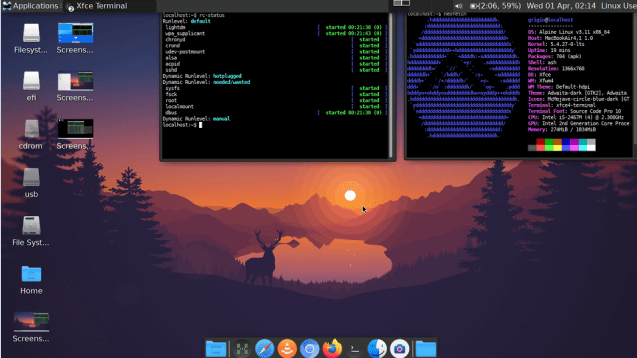
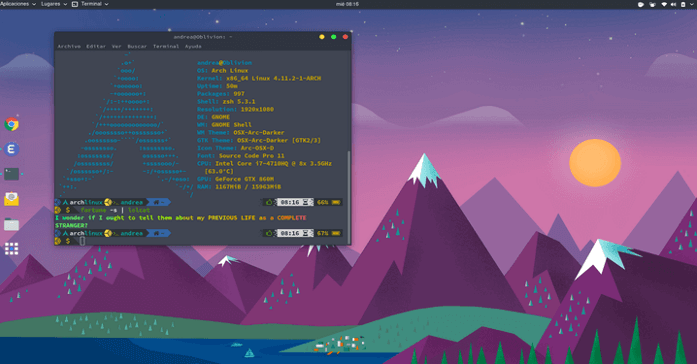
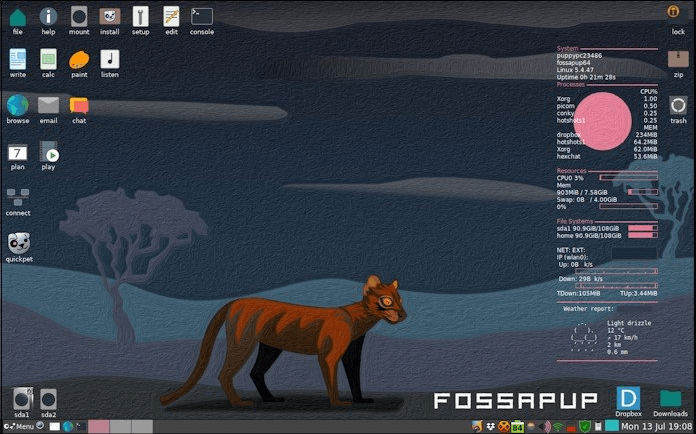
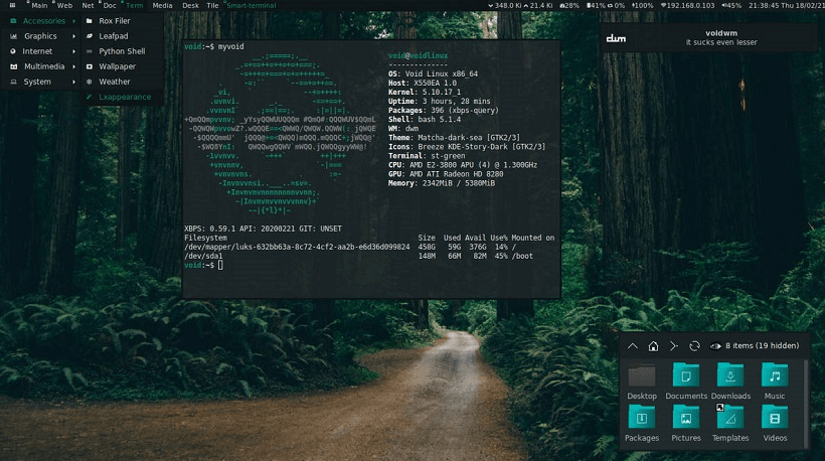
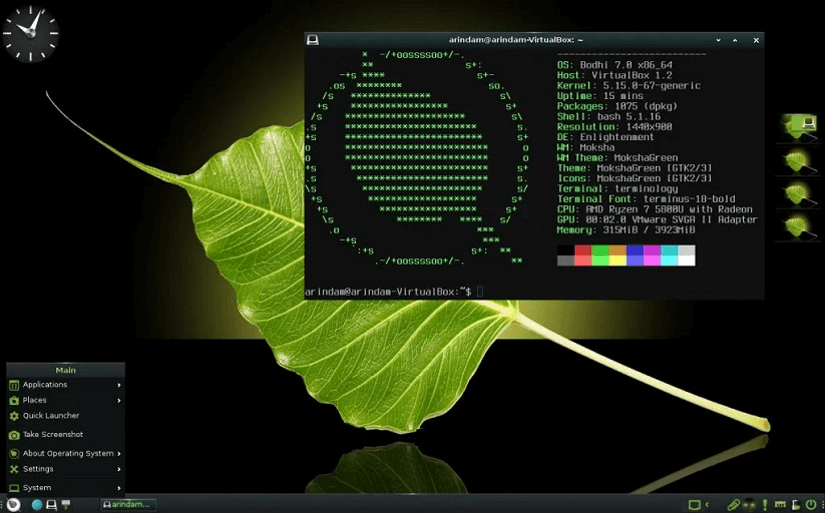
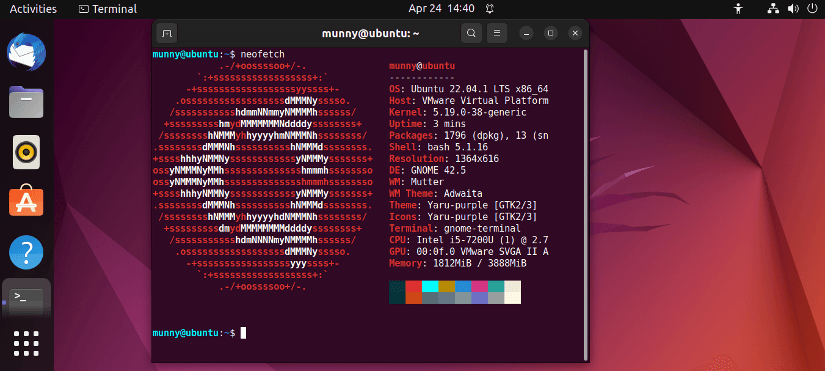
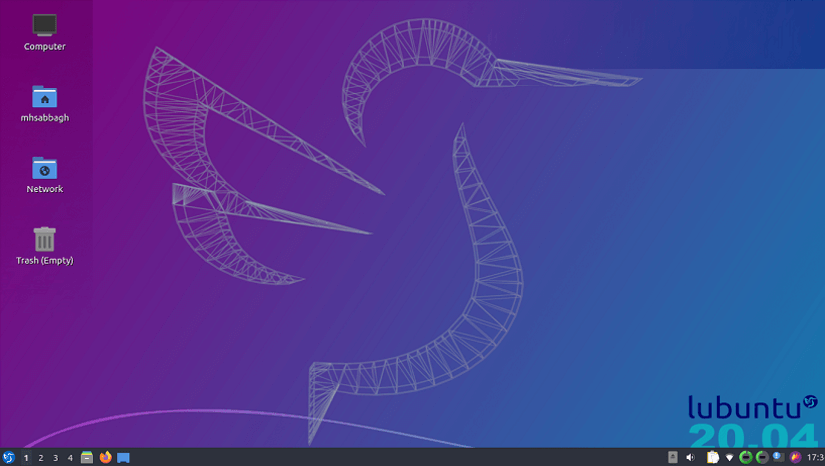
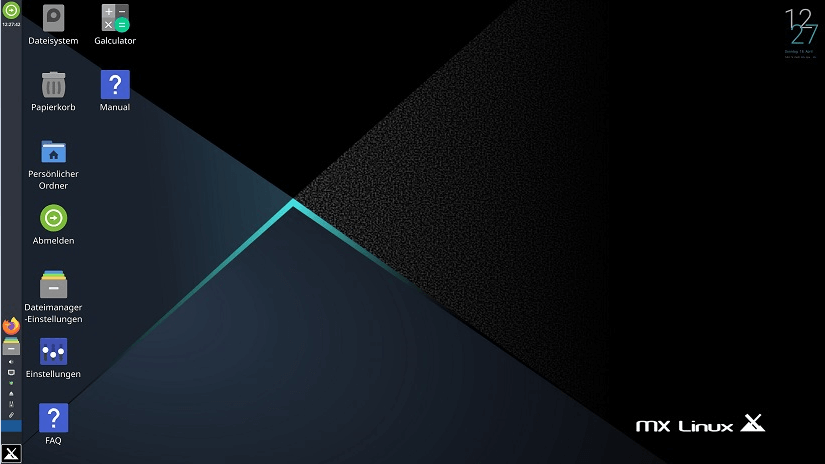
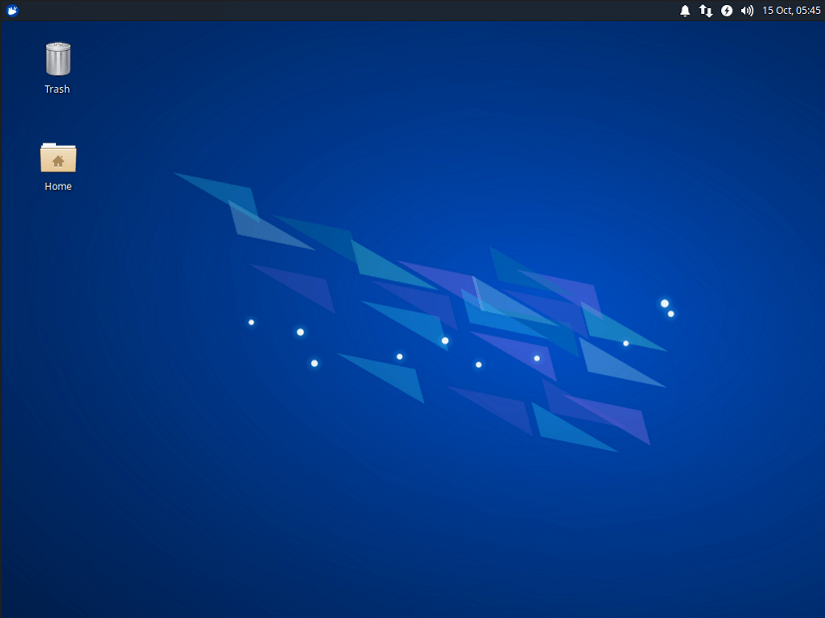




Monira,
Thanks for this review, it was very helpful. I liked the comparative analysis chart in particular.
You’re welcome! Glad to hear that you found the review helpful!
Interesting. I run Debian Bookworm on my desktop computer and have a much faster boot time than any that you have listed.
john@debian:~$ systemd-analyze
Startup finished in 1.928s (kernel) + 1.629s (userspace) = 3.558s
graphical.target reached after 1.620s in userspace.
That makes the boot time under 6 seconds.
Thanks for sharing your experience with Debian Bookworm! It’s great to hear that you’re enjoying a faster experience on your desktop. Well, the list I provided might not contain all the fastest distros, but it’s a good reference for those who are looking for a comparison, right? Anyway, I would love to hear about the hardware specifications you’re using!
Slax is fast, easy for install and require a little of ram.
Yes, it’s good for people who want portable & lightweight distributions. However, some of its drawbacks are its limited software selection & users may need to manually install additional software packages to meet their needs. Another issue is its limited community support compared to more mainstream Linux distributions. Anyway, everyone has their own preferences while choosing one & you prefer Slax more!
You are right, its for portable purpose for listen music and surf the web. I can see that you have a lot of experience so I would like to ask you what distro would be good for my acer aspire one aod 256 with 1 gb ram. In the past I had Slitaz on it, but it does not have hypnotix, riseup vpn and have outdated web browsers. Now I multiboot sparky minimal, q4os and antix with epiphany web browser – firefox is too heavy for 1 gb ram – but I cant see tv from the web on epiphany. Do you have any sugestion about distro and web browser for 1 gb ram?
Thank you for your kind words! Considering the limited resources on your Acer Aspire One AOD 256 with 1 GB RAM, you’re already on the right track with lightweight distros. If you’re looking for an alternative to Slitaz with more up-to-date software, I’d recommend trying out Puppy Linux or Tiny Core Linux. Both are lightweight and can be customized to your preferences. Moreover, go through 12 Best Lightweight Linux Distros to get an overview of other distros perfect for low hardware specifications.
For watching TV on a system with limited resources like yours, you may want to consider lightweight browsers that still support modern streaming technologies. Among the lightweight options, Midori and Falkon (formerly QupZilla) are worth mentioning. Besides these, Palemon & Dillo are also good as lightweight browsers.
Thank you for the quick response. I will try all you suggested me and read the article of 12 best, then I will tell you my experience. For now i use more antix 32 bit than others, because its booting faster and is more responsive when opening programs. I am using Fossa Pup on usb on my old HP with 2 gb ram and is working very good, but became slugish after hours of watching premiere league and surfing the web. Somethimes freezes, so I installed Void Xfce 32 bit on hdd. Do you know, if is possible to install a program like synaptic on Void – for update and install software?
You’re welcome! Feel free to explore and I look forward to hearing about your experiences. As for your preference for antiX 32-bit due to its fast boot and responsive program opening, that’s a great choice for a system with limited resources.
Regarding Fossa Pup on your USB, it’s understandable that continuous usage, especially with resource-intensive activities may lead to sluggishness over time. Your decision to install Void Xfce 32-bit on the HDD is a thoughtful move to address performance concerns.
Anyway, Void Linux uses the XBPS (X Binary Package System) package manager, and it doesn’t natively support Synaptic, which is a graphical package management tool commonly associated with Debian-based systems. However, if you prefer a graphical package manager on Void Linux, you can explore alternatives like Octoxbps (derived from OctoPkg), which is a graphical frontend for the xbps package manager. To install Octoxbps on Void Linux, use the command
sudo xbps-install -S octoxbps. Once installed, you can runoctoxbpsto manage packages in a graphical interface.Your hint has borne juicy fruits, OctoXBPS is exactly what I desperately needed. Now I can see what programs I have available for installation, I will call it OctoPussy.
Falkon is fast and allows me to watch videos, it’s much lighter on resources than Firefox and Chromium. I also installed Abiword, Bleachbit, Goodvibes and Tor Browser.
I can’t believe how fast the Octo is compared to Synaptic on a 20-year-old machine with 2GB of ram. But I couldn’t find the Riseup vpn, Hypnotix tv and Freetux I use in Debian. Do you know if they can be installed in Void even though they are not in the repository?
I feel that Void can make me happy even with old machines. I saved LinuxSimply among favorites, I like how you have everything neat and transparent.
It’s great to hear that Octoxbps has been helpful for you! Regarding your question about installing Riseup VPN, Hypnotix TV, and Freetux on Void Linux, it’s possible but quite a handful of work, also risky to install software that isn’t in the official repository, as it requires additional steps.
For installing Hypnotix TV, first, you can check for community-contributed packages in the Void Linux community repository. You’ll need to enable the community repository in your package manager configuration. Edit the
/etc/xbps.d/00-repositories.conffile and uncomment the line for the community repository. Then update the package cache bysudo xbps-install -S. After updating the package cache, search for Hypnotix TV again and install it if it is available there.Another way is to build from the source. This method requires downloading the source code from the Hypnotix TV repository, resolving any dependencies, and compiling it on your system. Check the Hypnotix TV documentation or README file for instructions on building from the source.
The same procedure goes for Freetux. Without this much hassle, you can just try some lightweight media players such as Kodi, a popular and versatile media center application that supports a wide range of media formats. As for VPN, you can use OpenVPN or WireGuard. They are lightweight and can be installed from the official repositories.
Thank you for giving me rational guidance, which influenced my decision to take the safe route. Installing programs from source does not appeal to me enough at the moment, probably because of the hell of dependencies and the likelihood of breaking the system.
I installed Kodi and the Simple Iptv addon, than added the url I got from github. Everything works better than expected, the playback is completely smooth and I notice that kodi offers a lot of possibilities to explore, which is a nice new challenge, a new toy for me.
I also installed openvpn and wireguard. But now comes the hard part, the vpn configuration. I imagine that after the configuration, my computer will connect to a remote server, which will change my ip address and thus obfuscate my identity, and from there the request will go to the sites I want to visit. And vice versa. I do not know where my ISP is in this chain and what it can see. That is all I know on the subject, but I think its important to understand.
Can you advise me on a link that explains the matter clearly enough for a non-expert like myself?
I’m glad to hear that you found the guidance helpful. It’s great that everything is working smoothly for you!
Visit this link, it explains the matter much more clearly for beginners. Hope it helps!
All your tips helps! Thanks for the link, this part will probably be the most challenging. The next step will be to install Void on an Acer with 1 gb ram. I still have to think which window manager I will use instead of desktop environment. If everything will work smoothly there too, it will be a real miracle. I am becoming a faithful reader of your articles!
You’re welcome! With 1GB, multitasking and resource-intensive tasks might be sluggish. Consider lightweight window managers like Openbox, Fluxbox, or IceWM. Opt for a minimal installation during setup and add packages only as needed. Choose lightweight alternatives for essential applications like browsers (Falkon), media players (Kodi), and office suites (Abiword). Keep an eye on resource usage with tools like
htopto identify and address any bottlenecks.Very interesting htop app! I got some very old but still working computers with different specifications from friends and I totally fell into experimenting with operating systems. On a machine with 2 gb ram I installed Emmabuntus, Sparky minimal and Void xfce, all 32 bit, and Wattos and Q4os, both 64 bit. Interestingly, the 32 bit versions freeze more easily on this machine than the 64 bit versions.
On Void, in addition to xfce, I have installed fluxbox, icewm and i3, which I switch between in the display manager to get to know them better.
I installed ventoy on the usb stick and added Void lxde 32 bit live, which a linux enthusiast made and made his version available on SourceForge, along with the other isos. I ran Void lxde live 32 bit from the stick on an Acer Aod 257 with 1 gb ram and found that it consumed 160 mb ram at idle. On this laptop I have Antix installed on the hard disk which uses 80 mb ram, Sparky minimal which uses 190 mb and Q4os trinity which uses 415 mb ram. All the systems on this laptop are 32 bit, although it has a 64 bit processor because I find that I can put more load on it with 32 bit versions before it freezes. With the htop I will now be able to find out why such differences in ram consumption between distros.
Interestingly, on Antix and Q4os Kodi refuses to start, but on Sparky and Void it starts and works fine, which is very important to me.
I haven’t looked into vpn yet, because I’m focused on the basics at the moment, but that’s coming up too. I will report my findings to you, I wouldn’t be so enthusiastic without your help, lack of knowledge is tiring, but progress is refreshing and motivating.
Hey, thanks for sharing your adventures with trying out different operating systems on those old machines! It’s cool to hear about your experiments, and it’s awesome to see how much you’re enjoying them. You can also share your experiences in different forums and distro review pages (like Distrowatch) which can be a great way to connect with fellow enthusiasts and learn even more.
And kudos for diving into htop! That tool is a lifesaver when it comes to understanding RAM consumption differences. Keep tinkering away, and don’t hesitate to give me a shout if you need any tips or run into any roadblocks. Your enthusiasm for learning and progress is contagious—keep it up!
I appreciate your willingness to help, it gives me an extra wind in my sails. I wrote a review of Slax on Distrowatch a while back and the next one will be Void once I get to know it better, I am currently scrambling it on several machines and so far it is stable and running better than I expected. On an Asus laptop with 4 gb of RAM it literally flies. It makes me feel good to share my adventures and roadblocks with you.
Hey, I’m really glad to hear that you’re finding my assistance helpful! Your adventures in exploring different Linux distributions are truly inspiring. It’s impressive that Void is running so well, especially on hardware with limited resources. I’m excited to read your review once you’ve had more time to test it thoroughly. If you encounter any challenges or have further adventures to share, feel free to reach out. Keep up the great work!
It is good to read you again. After several months of trying and abusing various distributions, alternating a little with one and a little with the other, I find myself returning to Lubuntu. I didn’t think rationally, but rather indulged my feelings, as much as you can feel them for an operating system.
Then I tried to think rationally why I always come back to Lubuntu and I came to the conclusion that it is not the best in everything, but I could not find a single flaw in it. It looks good, it boots quickly, it’s responsive, I can install anything my heart desires on it, I can connect it to Hisense smart tv which has a very difficult time recognising linux hdmi, I can listen to music through a bluetooth speaker which is also not a given with every distribution, it doesn’t heat up the laptop too much, it updates just often enough that it’s not cumbersome. Void is even faster, but it lags behind in other parameters, which does not make me prefer it. Lmde is very good, but slower. PcLinuxOs is also faster, but I can’t install some programs that are essential for me, and the alternatives are not as attractive.
With Devuan, I was disturbed by certain bugs in the installation. Solus is also lightweight, but I find it hard to connect it to a smart tv, Puppy and Porteus are more suitable for a usb stick and are designed for that, as are Slax, WifiSlax and Pentoo. Slitaz doesn’t have a modern browser and the mouse cursor flashes all the time, Q4os is too slow to start the desktop and is not as software-perfect as Lubuntu. Sparky is almost perfect, but Lubuntu looks better.
Now that I have tried everything that is possible to run, I can be at peace with Lubuntu and get on with exploring the programs it has to offer. I am particularly interested in the area of anonymous web browsing for political activism. In Europe, there are increasing attempts to restrict freedom of speech, so I suspect, that in the future it will be better to be anonymous when criticising the government in comments under articles by state-controlled media.
Lubuntu has become your go-to choice, right? It’s not necessarily the best at everything, but it ticks all the right boxes. Quick boot times, responsiveness, and the freedom to install whatever you want. Lubuntu’s got your back!
Now, about that anonymous web browsing for political activism, you’re on the right track. Consider the Tor Browser, a trusty VPN, and some privacy extensions. Keep fighting the good fight!
Exactly as you wrote, as always. Lubuntu meets all (my) needs. Today I wanted to comment on an article about the growing health care debacle, I started vpn and tor browser, but the media portal prevented me from logging in to comment. I also tried using the meek – azure bridge but to no avail. With vpn and firefox on, I had no problems logging in. Obviously I will have to look for new solutions. For now I will use vpn and firefox with ghostery, tor network seems to be out.
Yes, the Tor network can sometimes be blocked by certain websites or media portals due to its association with anonymous browsing. If it helps you can explore other bridge relays or pluggable transports. Anyway, using a VPN with Firefox and Ghostery is a good alternative, as it provides a balance between privacy and accessibility. Good Luck!
Good list, but I’m not sure I would include any of the ubuntu based distributions as the tend to be heavier, especially the original ubuntu. I would have also included gentoo as it is like arch, but is even faster and compiles its programs from source for more optimisation. I’ve seen someone run a gentoo system with a graphical environment (dwm, in this case) in under 50 MB of ram!
Thank you for your thoughtful input! You raise a valid point. Ubuntu and its derivatives, while user-friendly and widely used, do tend to be more resource-intensive due to their comprehensive features and pre-installed software. However, they can still be a good choice for users who prioritize ease of use and compatibility. Your mention of Gentoo is spot on. However, it’s worth noting that Gentoo requires a steep learning curve. For experienced users seeking the ultimate lightweight experience, Gentoo is a compelling option!
Thank you Munny, I hope that one day you will write an article on privacy and security so that we can learn something new from your clear way of explaining things. By by.
This isn’t really a review of which is fastest. No speed testing results here. In speed test results Linux Mint regularly performs best. Arch and Ubuntu well behind. Bodhi and Puppy are clearly light weight, but often RAM use depends on Desktop Environment and most distros support xfce. Also gaming and nornal pc use vary. Like if you are gaming you don’t want a lightweight distro, you want something that optimises use of your graphics card.
Easy OS is much faster than Mint on my laptop. Ubuntu is the slowest.
I’m astonished that no one seems to have heard of Clear Linux – by Intel.
It should work on AMD but on Intel hardware (I5, I7, i9) it’s an absolute beast, leaving all the others here in it’s dust.
I’m genuinely horrified that so many professional and well-read reviewers seem to be unaware.
Put it on bare metal and watch it fly. It doesn’t run Steam Proton well, but the games that do run (Aerofly being a good example) see frame rate improvements that are liking upgrading to whole faster machine. Perhaps as much as 25% quicker and it boots faster than the others too.